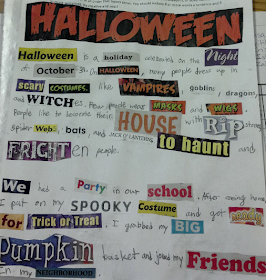I know it sounds absurd, but no matter what age your child or student is (if they are old enough to be in school and doing math), you should be using the words "equality" and "inequality" to describe numbers that are equal or not equal. One simple way of doing this is to use a pan balance. You can differentiate these activities to use with students in K-8!
My students are regrouping when adding or subtracting 2 and 3-digit numbers. In order to help them understand that regrouping is not taking away or adding any numbers, but simply putting them in another place and form, I do something like this:
If you counted, you'd see ten cubes on one side and a rod (made of ten connected cubes) on the other side. The arrow points to the middle because the scale is balanced!
To show greater than and less than, all you have to do is have the children count out the number of cubes and / or rods (or flats if you're working with hundreds) and see which side is heavier (goes down).
You can also do this with "missing number" or pre-algebra problems. Using the above picture, I would write a missing number sentence: 5 + __ = 10. Students would add cubes to the higher side (meaning that side of the scale is lighter, and thus represents a smaller number) until the balance showed both pans being equal. They would be able to find that 5+5=10. No more frustration, and no need to show students that they can use the inverse (10-5=___) to find the answer!
You can try this without having a pan balance or base-ten blocks / place value blocks at home...because I have found the websites for you!
This site is called the Illuminations Pan Balance and it was created by the National Council of Teachers of Mathematics. You can start out by showing students how different shapes (instead of numbers) can have different masses. Therefore, the square is greater than / heavier than the triangle. I have used this with kindergarteners and they understand it! I used to have a worksheet that was made specifically for this site, but can't find it at the moment.
Next, you can show them that they have to add to the side that weighs less to balance it.

Students can reset the balance or complete different "sets" where the shapes have different masses OR you can have them try it with numbers.
As you can see, we just demonstrated the commutative property of addition - the order of the addends doesn't change the sum. We created an equality!
Now we've used the associative property of addition!
Download some practice sheets here! This document is a pdf that includes harder problems and blank scales for students to create their own equalities.
Check out my other Making Math Memorable Posts!





















































